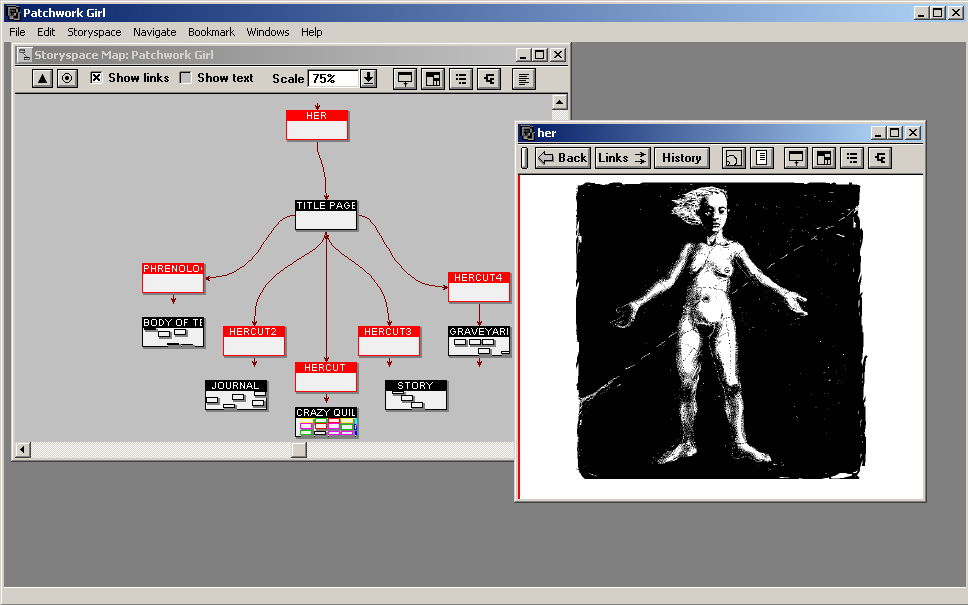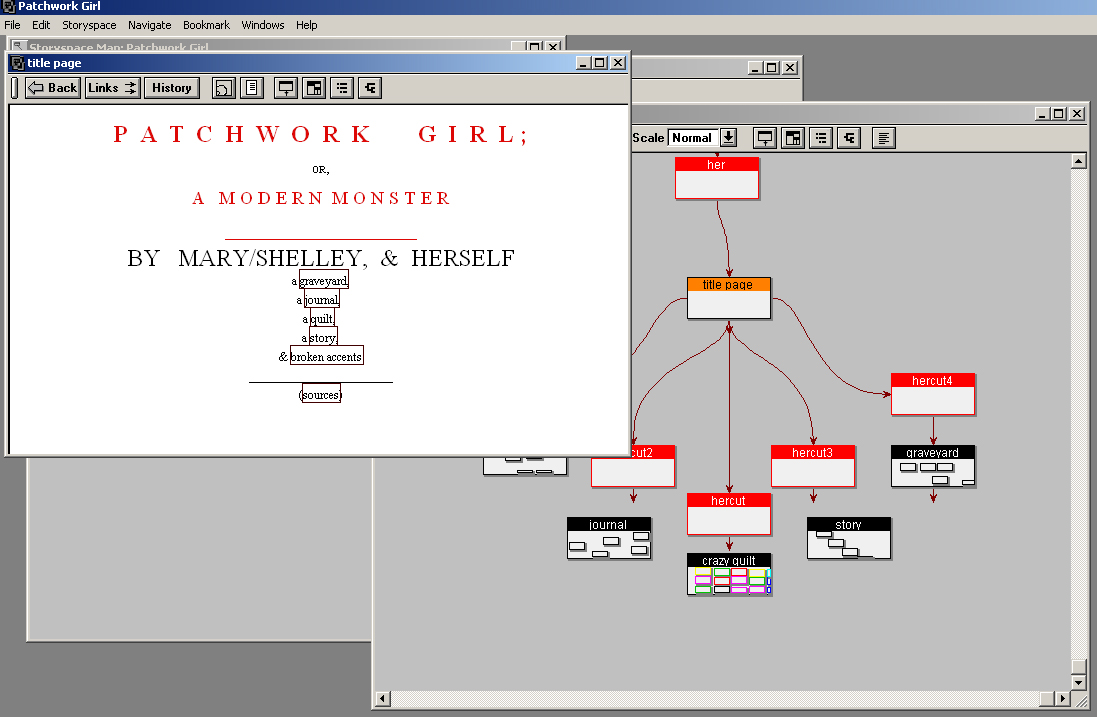Letteratura anglo–americana 2013-14
| Letteratura anglo–americana 2013-14 |
|
|
Altre forme di scrittura
Emilio Isgrò
http://www.youtube.com/watch?v=DTctjC3WlcE
Cancellatura per Tebaldini, 2003, acrilico su carta, cm 29,5x21
"Con i suoi codici, capaci di contrastare immagini convenzionali e senso comune senza però negare la valenza estetica, l’artista dà vita a un processo rigenerativo. Il segno iconico prende il sopravvento su quello verbale: le cancellature - non meccaniche - eliminano tutto ciò che potrebbe risultare superfluo. In questo lavoro sopravvive solo il nome del personaggio legato all’evento della sua nascita, accrescendo così il significato delle parole residue e la comunicazione poetica del messaggio. La voluta ambiguità percettiva del caratteristico linguaggio dell’autore autorizza a ‘lèggere’ nella diversità delle cancellature nere, dei ritmi, delle pause bianche e della scrittura colorata, anche la musicalità di un’opera in-compiuta."
William Burroughs, “Cut-ups”
Burroughs’ essay "The Cut-Up Method of Brion Gysin" acknowledges this in its first sentence:
.
At a surrealist rally in the1920s TristanTzara the man from nowhere proposed to create a poem on the spot by pulling words out of a hat. A riot ensued wrecked the theater. [. . . ] In the summer of 1959 Brion Gysin painter and writer cut newspaper articles into sections and rearranged the sections at random.
.
"The cut-up is actually closer to the facts of perception than representational painting. Take a walk down a city street and put down what you have just seen on canvas. You have seen a person cut in two by a car, bits and pieces of street signs and advertisements, reflections from shop windows - a montage of fragments. Writing is still confined to the representational straitjacket of the novel ... consciousness is a cut up. Every time you walk down the street or look out of the window, your stream of consciousness is cut by random factors."
VIDEO CON CUT-UPS VIDEO canale
Audio: http://www.bbc.co.uk/bbcfour/audiointerviews/realmedia/burroughsw/burroughsw3.ram
IPERROMANZO pdf de Le Lezioni americane di Italo Calvino
"Lezioni americane" [1]
'iperromanzo":
- luogo "d'infiniti universi contemporanei in cui tutte le possibilità vengono realizzate in tutte le combinazioni possibili";
-dove può valere "un'idea di tempo puntuale, quasi un assoluto presente soggettivo" (Jorge Luis Borges: Il giardino dei sentieri che si biforcano; racconto della raccolta Finzioni);
- dove le sue parti "sviluppano nei modi più diversi un nucleo comune, e che agiscono su una cornice che li determina e ne è determinata";
- che funziona come "macchina per moltiplicare le narrazioni" (Italo Calvino: Se una notte d'inverno un viaggiatore, e Il castello dei destini incrociati);
- "costruito da molte storie che si intersecano" (Georges Perec: La vita istruzioni per l'uso).
Lezioni americane. Sei proposte per il prossimo millennio
La grande invenzione di Laurence Sterne è stato il romanzo tutto fatto di digressioni; un esempio che sarà subito seguito da Diderot. La divagazione o digressione è una strategia per rinviare la conclusione, una moltiplicazione del tempo all'interno dell'opera, una fuga perpetua; fuga da che cosa? Dalla morte, certamente, dice in una sua introduzione al Tristram Shandy uno scrittore italiano, Carlo Levi, che pochi immaginerebbero come un ammiratore di Sterne, mentre invece il suo segreto era proprio quello di portare uno spirito divagante e il senso di un tempo illimitato anche nell'osservazione dei problemi sociali.
L'orologio è il primo simbolo di Shandy, - scriveva Carlo Levi, - sotto il suo influsso egli viene generato, ed iniziano le sue disgrazie, che sono tutt'uno con questo segno del tempo. La morte sta nascosta negli orologi, come diceva il Belli; e l'inflelicità della vita individuale, di questo frammento, di questa cosa scissa e disgregata, e priva di totalità: la morte, che è il tempo, il tempo della individuazione, della separazione, l'astratto tempo che rotola la sua fine. Tristram Shandy non vuole nascere, perché non vuol morire. Tutti i mezzi, tutte le armi sono buone per salvarsi dalla morte e dal tempo. Se la linea retta è la più breve fra due punti fatali e inevitabili, le digressioni la allungheranno: e se queste digressioni diventeranno così complesse, aggrovigliate, tortuose, così rapide da far perdere le proprie tracce, chissà che la morte non ci trovi più, che il tempo si smarrisca, e che possiamo restare celati nei mutevoli nascondigli.
FROM:
Italo Calvino, Lezioni americane. Sei proposte per il prossimo millennio, Garzanti Milano 1988.Se una sera d’inverno un viaggiatore, Italo Calvino
Prose and Anticombinatories, Italo Calvino
Borges, Il sentiero dei cammini che si biforcano
Marc Saporta, Composition n° 1 (1962, romanzo combinatorio)
Sulla confezione: “TANTI ROMANZI QUANTI SONO I LETTORI. L’ordine delle pagine è casuale: mescolandole, a ciascuno il “suo” romanzo”. Nella prefazione all’edizione originale, Saporta avverte: “Il lettore è pregato di mescolare queste pagine come un mazzo di carte. Di tagliare, se lo desidera, con la mano sinistra, come si fa da una cartomante. L’ordine con il quale le pagine usciranno dal mazzo orienterà il destino di X. Infatti il tempo e l’ordine degli avvenimenti regolano la vita più che la natura degli avvenimenti stessi”.
“The reader is requested to shuffle these pages like a deck of cards; to cut, if he likes, with his left hand, as at a fortuneteller’s. The order the pages then assume will orient X’s fate.
“For the time and order of events control a man’s life more than the nature of such events. Certainly there is a framework which history imposes: the presence of a man in the resistance, his transfer to the Army of Occupation in Germany, relate to a specific period. Similarly, the events that marked his childhood cannot be presented in the same way as those which he experienced as an adult.
“Nor is it a matter of indifference to know if he met his mistress Dagmar before or after his marriage; if he took advantage of Helga at the time of her adolescence or her maturity; if the theft he has committed occurred under cover of the resistance or in less troubles times; if the automobile accident in which he has been hurt is unrelated to the theft — or the rape — or if it occurred during his getaway.
“Whether the story ends well or badly depends on the concatenation of circumstances. A life if composed of many elements. But the number of possible compositions is infinite.”
Jeffrey Shaw: Legible City, Responsive Environment 1988-91
Apollinaire, "La colombe poignardée et le jet d'eau"
Mark Hansen e Ben Rubin, Listening Post
Intera frase su uno stesso schermo + molteplici voci:
http://www.youtube.com/watch?v=aIhtW5vMcXg&feature=relatedstesso testo scorre su più display + una voce narrante; parole singole + voci in sequenza; dissolvenza delle lettere da min5.11:
http://www.youtube.com/watch?v=lSt2bA2H8CY&feature=relatedle parole si compitano sui singoli schermi una alla volta :
http://www.youtube.com/watch?v=r1yFBbPPkt8&feature=related
• N. Katherine Hayles, Nick Montfort, Scott Rettberg e Stephanie Strickland (eds.), Electronic Literature Collection, Volume 1, October 2006: http://collection.eliterature.org/1/
• Laura Borràs, Talan Memmott, Rita Raley e Brian Kim Stefans (eds.), Electronic Literature Collection, Volume 2, February 2011: http://collection.eliterature.org/2/ .
• The E P C electronic poetry center, http://epc.buffalo.edu/
• Hermeneia: Literary Studies and Digital Technologies, http://www.hermeneia.net/
hypertext
Storyspace
Così scrive Micheal Joyce:Our program, Storyspace, originated as an attempt to develop a text-processing tool to enable writers of interactive presentations to exploit multiplicities. Storyspace depends on a decisional order rather than a fixed order of presenting material. (…) A decisional order, however, may be thought of as a series of locales, some of which are linked by linear progression or argument, but with others that are determined by allusiveness, resemblance, evocation, or unexplained or “intuitive” parallels determined as often by the author as by the reader. (…) Not long after I first met Stuart Moulthrop, I remember asking him, in all seriousness, “Do you ever find yourself wanting to press the words on a page of a book you’re reading to see what’s behind them?” [M. Joyce, Of Two Minds. Hypertext Pedagogy and Poetics, The University of Michigan Press, Ann Arbor (Michigan) 1998, p. 95.]
“Electronic writing is both a visual and verbal description”, says Bolter, “not the writing of a place, but rather a writing with places, spatially realized topics […] signs and structures on the computer screen that have not easy equivalent in speech.” For Bolter, hypertext’s “electronic symbols […] seem to be an extension of a network of ideas in the mind itself.” Storyspace, the hypertext system Bolter and I developed with John B. Smith, embodies Bolter’s view that the “topographical” writing of hypertext” reflects the mind as a web of verbal and visual elements in conceptual space.

